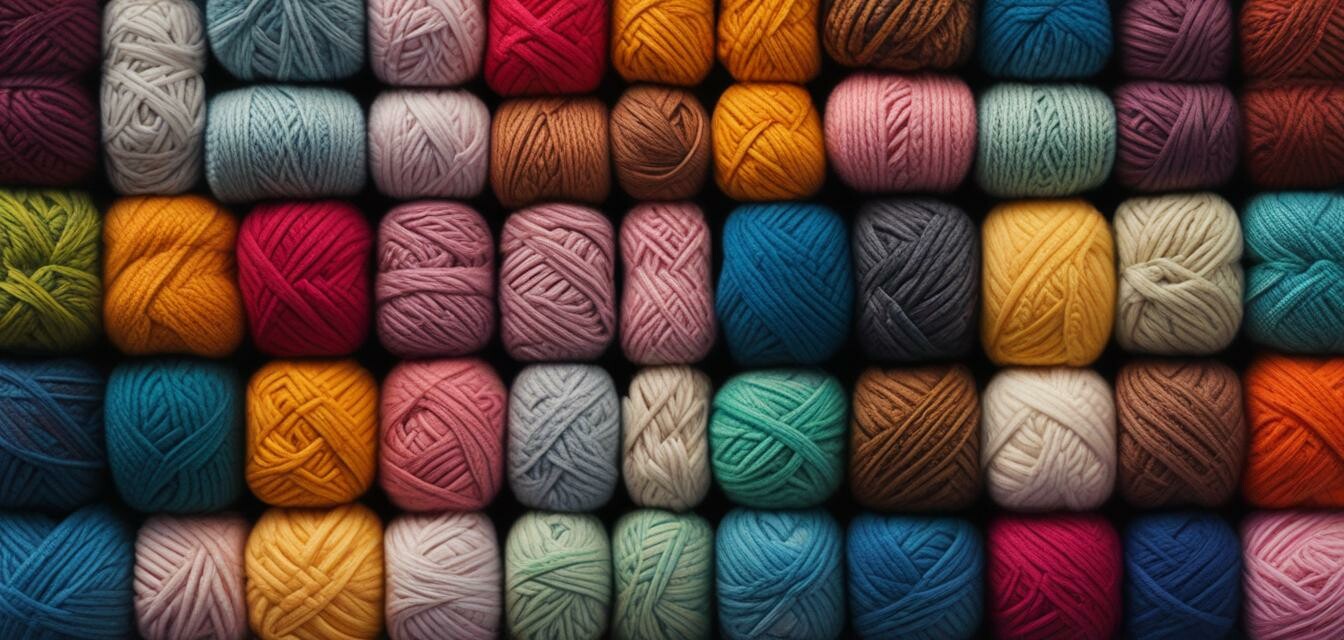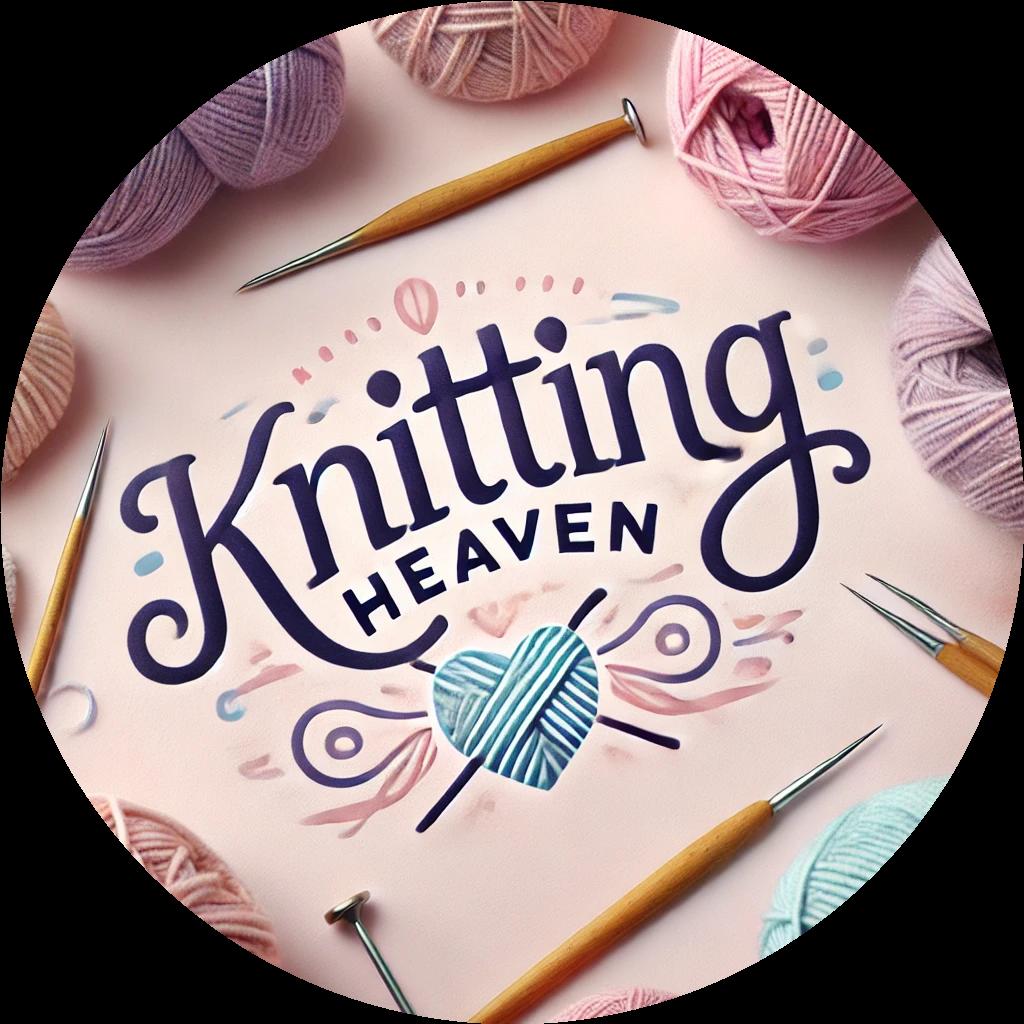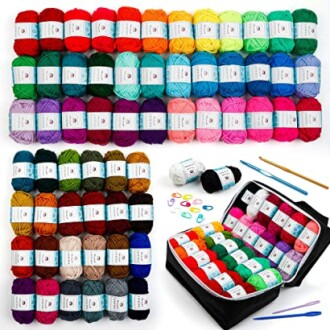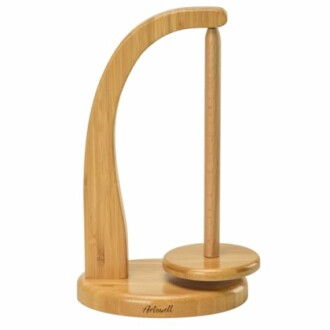
Understanding Yarn Weights: A Comprehensive Guide
Key Takeaways
- Yarn weight affects the texture and drape of your finished project.
- Choosing the right weight can greatly improve your knitting experience.
- Options include Lace, Fingering, Sport, Worsted, Bulky, and Super Bulky weights.
- Refer to yarn labels for guidance on using the correct hook or needle size.
- Understanding your project requirements is crucial in selecting the yarn weight.
When it comes to knitting, understanding yarn weights is essential for achieving the best results in your projects. Yarn weights indicate the thickness of the yarn and directly influence the final appearance and functionality of your creations. In this comprehensive guide, we will break down the different yarn weights and provide tips on how to choose the right one to elevate your knitting experience.
What Are Yarn Weights?
Yarn weights categorize yarns based on their thickness. Each category affects the texture, density, and drape of the finished piece. Knowing these categories will help you in selecting the best yarn for your project type.
The Different Yarn Weight Categories
| Yarn Weight | Recommended Knitting Needle Size | Common Uses |
|---|---|---|
| Lace | 0-2 (US) | Shawls, fine garments |
| Fingering | 1-3 (US) | Socks, lightweight garments |
| Sport | 3-5 (US) | Sweaters, baby garments |
| Worsted | 7-9 (US) | Afgans, sweaters, and home decor |
| Bulky | 9-11 (US) | Blankets, hats, quick projects |
| Super Bulky | 11-15 (US) | Chunky blankets, scarves |
Choosing the Right Yarn Weight for Your Knitting Projects
Selecting the right yarn weight can make or break your project. Here are a few steps to guide you in your decision making:
- Assess the Pattern: Always start by checking the pattern you’re following. Most patterns will specify the yarn weight required.
- Understand the Project: Consider what you are knitting. For example, a warm blanket might require a heavier yarn, while a delicate shawl would do well with a lace weight.
- Check Your Yarn Stash: Look at what you have available. Often, a creative solution can be found without a new purchase.
- Do a Gauge Swatch: Knitting a gauge swatch can help ensure that your finished project matches the desired dimensions.
- Consult your Local Yarn Shop: If you have uncertainty, don’t hesitate to ask for help or recommendations from your local yarn store.
Popular Yarn Fibers and Their Weights
Different fibers can also affect the weight and feel of your yarn. Some common fibers include:
- Acrylic: Often used in beginner yarns, it is durable and easy to care for.
- Wool: Natural fiber that offers warmth, ideal for winter garments.
- Cotton: Breathable and perfect for summer projects.
- Blends: Yarn blends combine the properties of different fibers for unique textures and effects.
Essential Tools for Working with Different Yarn Weights
To effectively work with the various yarn weights, it can be helpful to have the right tools at your disposal. Here are some essentials:
| Tool | Description |
|---|---|
| Knitting Needles | Different sizes for different yarn weights. Be sure to adjust as needed. |
| Yarn Holders | Keep your yarn tangle-free while working on your projects. |
| Stitch Markers | Help keep track of patterns and stitches, especially in intricate designs. |
| Tapestry Needles | Essential for weaving in ends after your knitting is complete. |
Featured Products for Your Knitting Needs
INSCRAFT 62 Acrylic Yarn Skeins
This yarn pack offers 62 assorted colors, perfect for a wide range of knitting and crochet projects, making it a fantastic starter kit.
Learn MoreBy selecting the right yarn weight, you can drastically improve your final product. Understanding yarn weights will help you create the desired texture and appearance, enhancing both your enjoyment and success in knitting.
Conclusion
In summary, understanding yarn weights is crucial for every knitting enthusiast. Take the time to familiarize yourself with the different weights and their uses, and always consider your project requirements. With the right yarn, you’ll be well on your way to creating beautiful knitted items.
Yarn Holder for Knitting and Crocheting
This wooden yarn holder will keep your yarn organized and tangle-free, enhancing your knitting experience with smoother operation.
Learn MoreFurther Reading
For additional insights into yarn variations and knitting projects, check out these related articles:
- Yarn and Fibers: Understanding Your Options
- Advanced Knitting Techniques for Experienced Crafters
- Expert Tips on Buying Knitting Tools
- Explore Creative Knitting Patterns
- Latest Trends in Knitting and Yarn
Join Our Community!
Embrace your love for knitting and connect with others in our community. Share tips, patterns, and advice with fellow knitters. Together, let's create amazing knitted projects!





